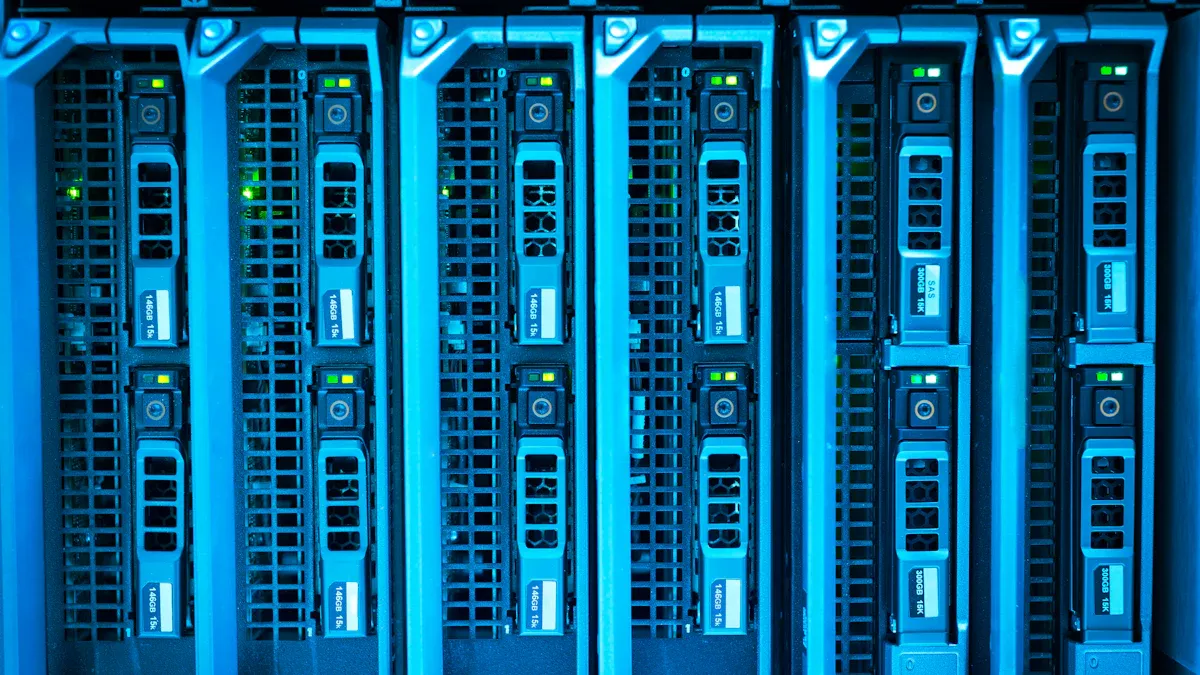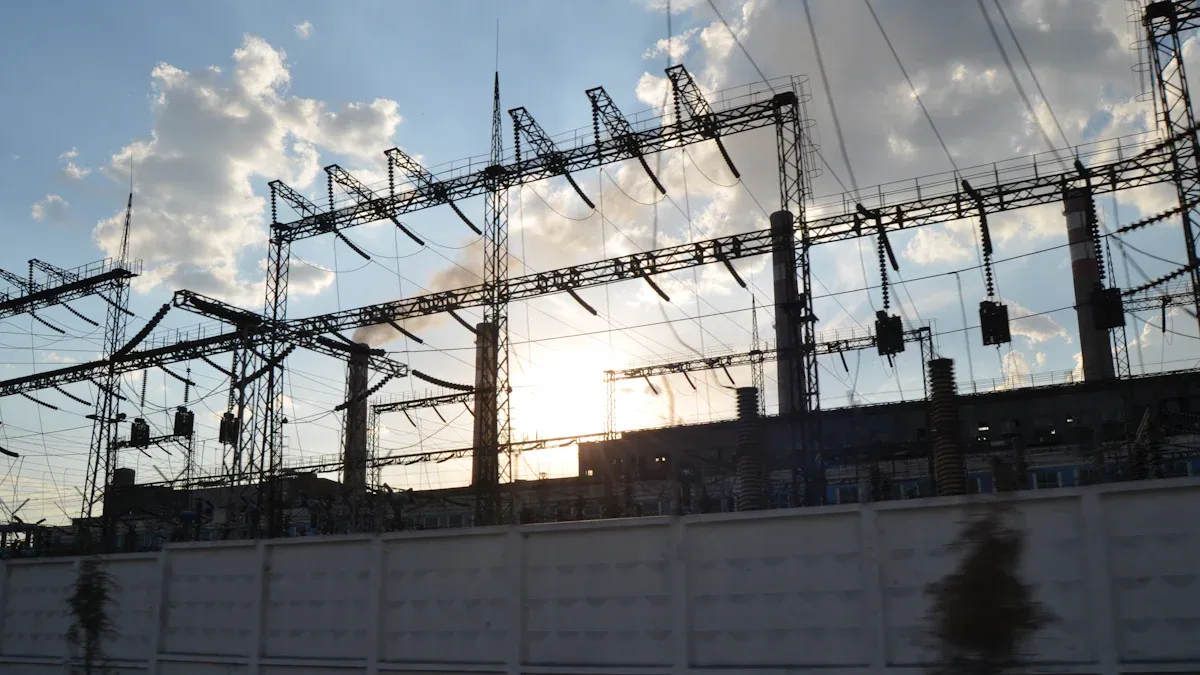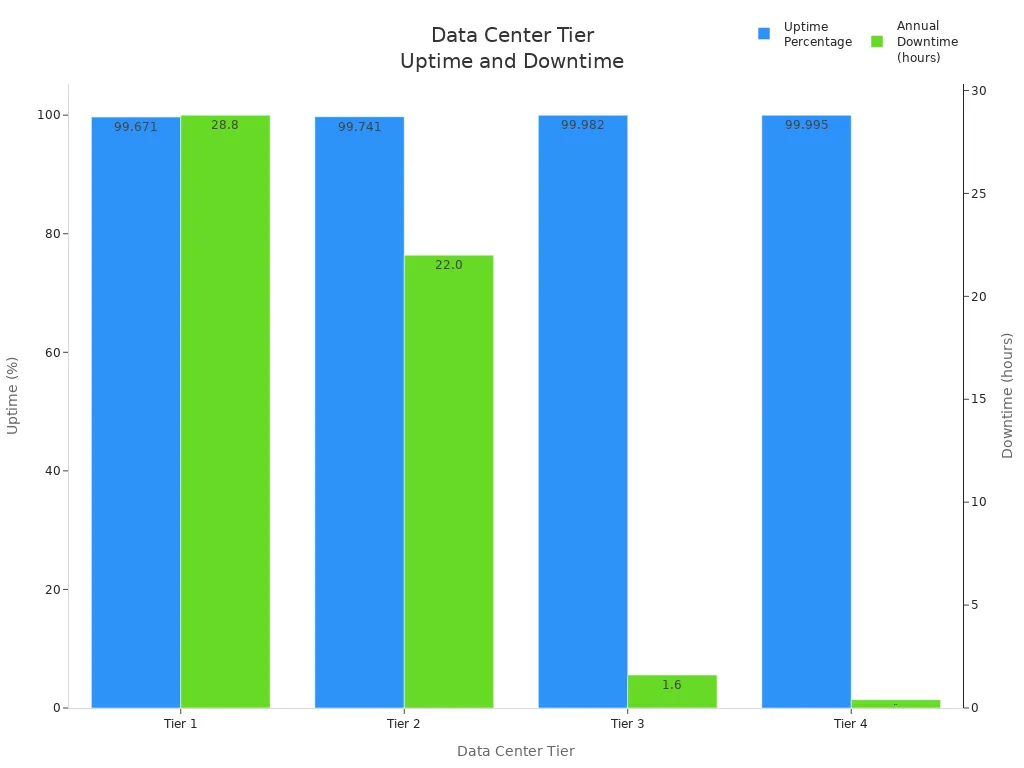© Copyright – 2010-2023 : All Rights Reserved. Sitemap
Power Distribution Unit PDU, rack mount PDU, PDU data center, Smart PDu, intelligent PDU
Power Distribution Unit PDU, rack mount PDU, PDU data center, Smart PDu, intelligent PDU
DTI-CX 2025 Digital Transformation Indonesia Conference, DATE:6-7 AUG.2025, Booth No.: C21

Most groups in 2025 pick a dual input pdu when they need more reliability. This unit plugs into two power sources. A single input model connects to only one source. Data centers and important IT rooms use dual input designs for backup power. Home offices or small setups usually pick a single input power distribution unit because it is easier. New trends show that dual input models are growing faster in the market, as you can see below:
PDU Type | Market Share (2024) | Projected CAGR Through 2025 |
|---|---|---|
Single Input | Over 53% | Lower growth |
Dual Input | Smaller share | ~10% CAGR |
This information helps people choose a power unit that will work well in the future.
Dual input PDUs plug into two power sources. They switch by themselves if the power goes out. This keeps devices working during blackouts. They are great for data centers and important setups.
Single input PDUs use only one power source. They are easier to use and cost less. They work best for home offices and small businesses. These places do not need backup power as much.
Intelligent dual input PDUs have special features. They let you watch power use and control things from far away. They also send alerts to stop problems and save power.
Picking the right PDU depends on your power needs. Think about backup power, your budget, and if you will grow later. Planning now can save money and stop problems later.
YOSUN’s dual input PDUs have smart tools and safety checks. They give you choices for safe and strong power in tough places.

A dual input pdu uses two different power sources. This means it can switch if one power feed stops working. A single input power distribution unit only uses one power source. If that power stops, the equipment will turn off.
Dual input pdu models can switch power by themselves. This keeps devices working during a power outage. These units also have better monitoring. They help you see how much power is used and find problems early. Some intelligent pdus can send alerts and let you control them from far away. Many data centers and server rooms use dual input pdu units. They need their equipment to work all the time.
Single input pdus are easier to use. They do not have backup power or automatic switching. These units are good for home offices or small businesses. In these places, power problems are not as big of a worry. Some intelligent pdus here have simple monitoring. Most just give out power in a basic way.
The table below shows the main differences:
Feature | Dual Input PDUs | Single Input PDUs |
|---|---|---|
Power Source | Two independent electrical sources (redundancy) | One electrical source |
Automatic Transfer Switching | Yes, keeps power continuous | No, power loss if source fails |
Monitoring and Management | Advanced, intelligent features | Basic or none |
Suitability | Data centers, critical dual pdu application | Home offices, small businesses |
Scalability | High, supports growing distribution needs | Limited |
Installation Complexity | More complex, but intelligent management helps | Simple |
If you need your equipment to always have power, pick a dual input pdu. These units keep power on and protect important devices. Intelligent pdus in this group help you watch power and stop problems.
If you have a small office or business, a single input power distribution unit is fine. These units are simple to set up and cost less money. They work well where backup power is not needed.
Tip: Count your devices and think about future needs before you choose. Intelligent pdus can help you handle more power and give you better control.

A dual input pdu is a special device for power in important places. It connects to two different power sources, like the main power and a backup generator. The main job is to keep power going if one source stops working. It does this by switching between the two sources automatically. The unit can tell if the main power has a problem and quickly switches to backup. This switch is so fast that equipment does not turn off.
The dual feed pdu design uses two power feeds for better safety. The unit always checks both power feeds. If the first feed fails or is not safe, it switches to the second feed. When the main power is good again, it can switch back. This setup is used in data centers and server rooms where power must not stop.
Key features of a dual-input pdu are:
Two separate power inputs for backup
Automatic switching for smooth power change
Advanced monitoring for power and problems
Space-saving design with two feeds in one unit
A dual feed pdu can also have smart monitoring. This lets people watch power and find problems early.
Redundant power supply is a big benefit of a dual-input pdu. This means there is always a backup power source ready. If one feed fails, the unit switches to keep things running. This makes the system very reliable and keeps power on for important IT systems.
The dual feed pdu setup also supports n+1 power redundancy. This means there is one extra power source, so if one fails, others still work. Dual-circuit pdus and dual-input pdu units help stop downtime and protect devices. They also help balance the power load, which helps equipment last longer.
The table below shows where dual-input pdu units work best:
Use Case Category | Typical Applications and Benefits |
|---|---|
Data Centers | No power loss, automatic switching, smart monitoring, high safety |
IT and Enterprise | Backup power, less downtime, good power sharing |
Industrial Facilities | Reliable power in hard places, checks the environment, keeps power on |
Large Enterprises | Grows with needs, smart monitoring, ready for the future, backup power |
Small Businesses | Saves money, grows with business, metered dual feed pdu, remote control, balances power |
A dual-input pdu with automatic switching and backup power keeps power on and safe in important places.
YOSUN’s dual input pdu is a smart choice for power needs today. This dual-input pdu connects to two power sources. It keeps power going if one source stops. The unit can switch between power feeds right away. This helps important equipment stay on all the time.
YOSUN’s intelligent pdus let you watch energy use on LCD screens. You can see voltage and current in real time. The system checks for heat and moisture to stop problems. You can control outlets from far away and get alerts. These features help keep power steady and stop downtime.
YOSUN’s dual-input pdu always has a backup power source. The dual feed pdu shares power and keeps devices safe from surges. Intelligent pdus protect each branch and manage loads. This stops voltage drops and overheating. The company’s products pass many safety tests like ISO9001, GS, CE, VDE, UL, CB, RoHS, and CCC. They check each unit at the factory and give expert help.
YOSUN’s dual input pdu has smart features for busy places. The automatic transfer switching keeps power on for single power supply devices. This is very important in data centers, hospitals, and telecom rooms. These places cannot have power go out.
Intelligent pdus with backup power keep data safe and systems working. They let single-corded devices use two power sources for extra safety.
YOSUN has many sizes and outlet types for different needs. The table below shows some choices:
Category | Details |
|---|---|
Form Factors | Horizontal rack mount (19 inch), Vertical rack mount (0U), Compact 1.5U sizes |
Outlet Types | C13, C19, Brazil outlets (20A 250V), French sockets, India type outlets, Anti-strip outlets |
Safety Features | MCB, Surge protection, SPD, Overload protection, Hot swap anti-surge units, Overload switches |
YOSUN’s intelligent pdus work well for big IT setups. These units are very reliable and keep power on. Intelligent pdus help manage power and add safety. With many options, YOSUN’s dual-input pdu fits any important job.
A single input power distribution unit gets power from one source. It sends this power to many outlets. This unit is like a strong power strip. It does not make its own power. It just moves power from a wall outlet, UPS, or generator to other devices. You can use it for racks or shelves.
The unit plugs into one power feed.
It gives power to many devices at the same time.
Most do not have smart monitoring or remote control.
Its main job is to give each device the power it needs.
Many small businesses and home offices use this unit. It helps keep cables neat and powers equipment in network closets or server racks. Some units have switched outlets for simple control. Most just focus on giving out power in a basic way.
Note: Single input PDUs are important for setups where you want things simple and cheap.
Single input power distribution units have some good points for users. They are easy to set up because of their simple design. These units fit in small spaces and cost less than others.
Feature Category | Advantages | Disadvantages |
|---|---|---|
Design & Complexity | Easy to use, small size | No backup power, not many features |
Cost | Cheap, does not need much care | Not good for very important equipment |
Reliability | Good for places where power loss is not a big deal | Cannot keep things on if power goes out |
Best Use Cases | Home offices, small businesses, classrooms, network racks | Not for places that need power all the time |
People pick this unit for switches, routers, and small servers. It works best where power problems do not happen much. You do not get backup power with this unit. If the main power stops, all devices lose power.
Tip: If you want a simple and cheap way to give power to your devices, a single input power distribution unit is a good pick.
Picking the right PDU starts with knowing your space and backup needs. Each place uses power in its own way. Some places, like data centers, need power all the time. Small offices can handle short power breaks.
Here is a simple guide to help you choose:
Check the voltage and power setup in your building. Most racks use 208/240V or 400V.
Find out if you have single-phase or three-phase power. Single-phase racks often use single input PDUs. Three-phase racks work with dual-input pdu models for more backup.
Add up the power needed for all devices in the rack. Make sure the PDU can handle this amount.
Decide how many circuits and what amperage you need. This helps you pick the right PDU input.
Think about backup power. If your equipment must stay on, pick a dual-input pdu with automatic transfer switching. This unit switches power fast if one source fails.
Look at your devices and outlets. Make sure the PDU fits your equipment.
Plan where to put the PDU. Check where power comes in and how cables will run.
Pick features like metering, remote monitoring, and sensors for better control.
Tip: Intelligent pdus with real-time monitoring and remote control help stop downtime and make fixing problems easier.
Backup power is very important in busy places. Data centers use dual input pdu units to keep power on if one source fails. These intelligent pdus support N+1 backup, so there is always a spare. The table below shows how different data center levels use backup to get more uptime:
Data Center Tier | Uptime (%) | Allowed Downtime (hours/year) | Redundancy Level | PDU Recommendation |
|---|---|---|---|---|
Tier 1 | 99.671 | 28.8 | Minimal | Single input PDU |
Tier 2 | 99.741 | 22.0 | Some redundancy | Single or dual-input pdu |
Tier 3 | 99.982 | 1.6 | N+1 redundancy | Dual-input pdu with ATS |
Tier 4 | 99.995 | 0.4 | 2N or 2N+1 (full backup) | Dual-input pdu, intelligent pdus |

Intelligent pdus also check temperature, humidity, and airflow. These features help stop equipment from failing and keep things running. In busy racks, intelligent pdus with sensors and alerts keep systems safe.
Backup in 2025 means more than just power. Data centers use backup for power, cooling, network, and storage. The table below lists the main types:
Redundancy Type | Key Components | Why It Matters |
|---|---|---|
Power | Dual-input pdu, UPS, backup generators | Keeps power on during outages |
Cooling | Dual HVAC, backup chillers | Stops overheating |
Network | Extra switches, routers, cables | Prevents network outages |
Storage | RAID, SAN, cloud backups | Protects data from loss |
Compute | Load balancers, failover clusters | Keeps services running |
Note: Dual-input pdu units with smart features help with power backup and meet strict uptime goals.
Balancing cost and future needs is important. Some places only need basic power. Others need smart features for growth and safety.
Here are steps to help balance cost and plan ahead:
List the features you need now, like remote monitoring or sensors. Intelligent pdus have these options.
If you have a small budget, pick basic or metered PDUs. These give simple monitoring for less money.
Make sure the PDU matches your voltage, amperage, and outlet types. This saves money later.
Choose a PDU with more capacity and mixed outlets. This lets you add more devices as you grow.
Pick the right PDU type: basic, metered, monitored, or switched. Intelligent pdus with more features cost more but give extra value.
Use modular and scalable PDUs. These make it easy to add new tech and upgrade.
Smart planning saves money over time. Intelligent pdus with modular designs help support new devices, IoT, and busy computing.
Trends in 2025 show more people want intelligent pdus with real-time monitoring and remote control. These units help save energy and lower costs. Many companies want PDUs made from green materials and with energy-saving designs. As IT grows, backup and scaling matter more.
Common mistakes are overloading a PDU, not planning for future power, and skipping backup. Dual-input pdu units help stop total shutdowns by giving backup power. Intelligent pdus with automatic switching and hot-swap features let you do maintenance without turning things off.
Checklist for picking the right PDU:
Check power type and voltage
Add up total power needs
Choose your backup level
Match outlets to your devices
Plan for growth and new tech
Pick smart features for monitoring and control
Choosing a dual-input pdu or single input model depends on your space, backup needs, and budget. Intelligent pdus with smart features help you plan for the future and keep everything working well.
Picking a dual input or single input PDU depends on what you need. Think about how much you want your power to stay on, where you will use it, and if you might need more power later. Dual input PDUs give backup power and let you watch power closely. Single input models work well for easy setups. Some important things to look at are:
The shape and kind of outlets
If the voltage matches your devices
How much power it can give and if it has backup
If you can check power from far away
You can look at YOSUN’s website or ask their team for help. It is smart to plan for more outlets and cool features. This way, your power will be safe and ready for the future. 🛡️
A dual input PDU lets equipment use two power sources. This helps keep devices on if one power source stops. Many data centers use these for better safety and less downtime.
Yes. A dual input PDU with automatic transfer switching can help single-corded devices. It switches power fast, so equipment stays on during power loss.
An ATS in a dual input PDU can sense when power is lost. It quickly switches to backup power. This stops downtime and keeps important equipment safe.
Most dual input PDUs need careful setup with two power feeds. Many models have clear labels and instructions. YOSUN gives help to make installation easier.
Some single input PDUs have simple metering or monitoring. These features show how much power is used and help find problems. More advanced monitoring is found in dual input or intelligent PDUs.
A Professional And Leading Manufacturer
For OEM
& ODM Power Distribution Unit (PDU)
You Can Trust
CONTACT
Ningbo YOSUN Electric Technology Co., LTD
Leading Professional Manufacturer in PDU Power Solutions
Contact Info.